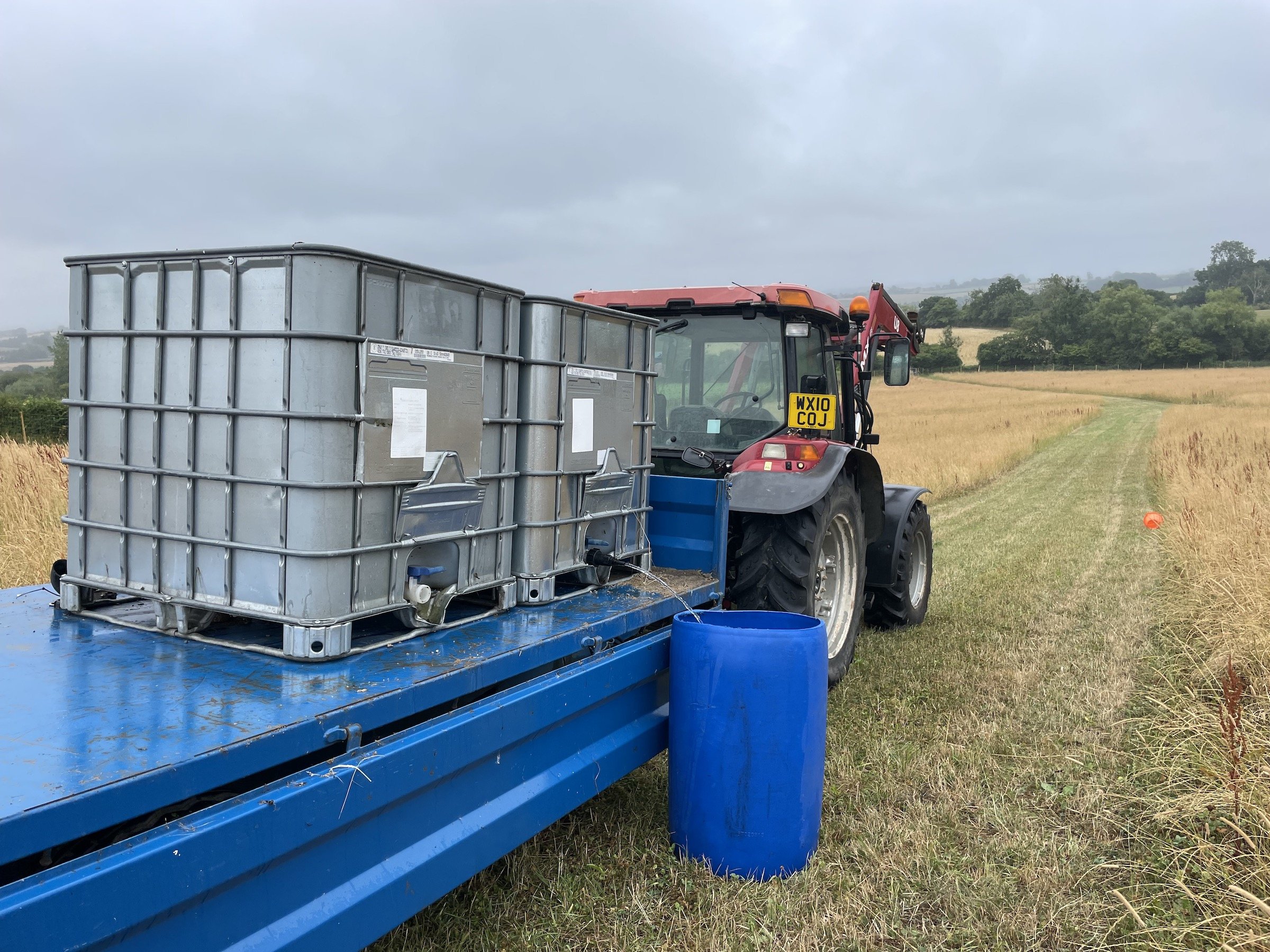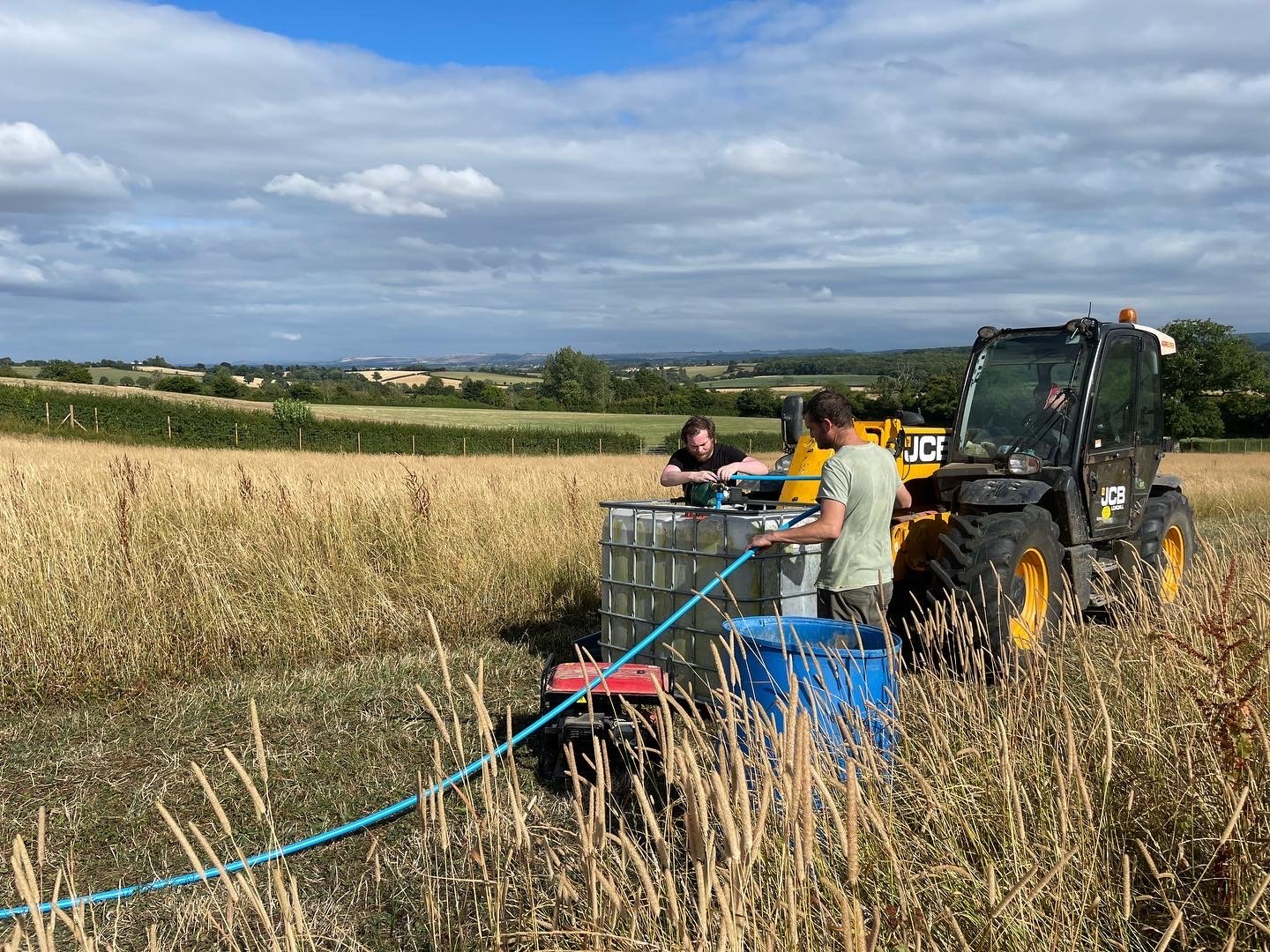Climate Crisis: Heatwaves vs Tree Planting
The heatwave to hit the U.K. and all of Europe through-out July and a good chunk of August was horrendous, and proved a real challenge for our team as we scrambled to water sites across the country. Thankfully survival rates are within expected bounds at most projects, with one a handful of smaller sites suffering enough losses that saplings will need replacing.
A little bit of context for those of us not thinking about reforestation all day every day: a standard practice for woodland creation is "overstocking", where trees are planted more closely together than you need, expecting some to be lost to critters, or unexpected circumstances like prolonged drought. It is simple to thin out the surviving trees after a few years, but the inverse is not true: you cannot magic a mature tree out of nowhere. If you only plant the number of trees you want for the woodland at the end, you need a 100% survival rate to establish a canopy. Instead of a successful woodland ecosystem, you just have a field with some trees, which would have some value as a woodland pasture for grazing cattle but that’s not the goal.
As we expect to lose some trees, we aim for 80% survival rate by the time we need to do the first thinning - around year five. If the deer, rabbits, or rogue escapist sheep manage to get past our defenses, or a vicious heatwave strikes, we are fine if they only take out 5%, but if they get to 40% we need to replant our losses.
Watering Saplings
When you buy a tree or shrub for the garden, the general advice is to water it for the first few years until its roots can establish, and water it more the hotter it gets.
It was a huge surprise to me when I was advised by a bunch of environmental services experts to generally not water saplings. This went against everything I had expected to be doing when we started charity, but the logic checks out.
These saplings are tiny, much smaller than the 5-8 year old trees you buy from a garden center. Those are root-bound in pots and are already much larger than their roots can support, which is why they need propping up so heavily. Drought is going to effect them far more, because their roots are tiny in comparison.
The bare-root saplings we use are 2-3 years old, and have barely anything to them. They are small, but once in the right conditions they start to grow fast. If they're not getting enough light they'll race for the sun, and if they're not getting enough water they'll dig their roots deeper to find it. We could spend a lot of time, money, and emissions watering them all summer, but that might not actually make for a better woodland. It could just make for a lot of shallow rooted saplings which are prone to falling over in upcoming winters with more extreme storms hitting them sideways.
For this reason, the largest environmental services companies do not water their saplings, they just replace losses next planting season.
The exception to this, is an extreme heatwave, and what happened in July definitely fell into that category. Thankfully the team scrambled, prioritising sites based on the weather they'd been getting. Some of our sites had a bit of a shower at least, but some had absolutely no water for four weeks, and needed the big guns brought out.
The effect on our future woodlands has been incredibly mixed, and different terrain, species, and planting conditions have lead to start differences.
Helpful Factors
All the sites where we've used hemp mulch matts or thick woodchip are showing far better survival rates. The government grants for woodland creation (English Woodland Creation Offer) are not always available for our tree planting, and when they are available they do not cover mulch matts anyway. We find the cost of buying matts, or the extra work of finding woodchip mulch, to be really worthwhile in keeping saplings alive.
At one site the clay soil dried so much its cracked open deep channels around the roots, and the mulch matts are at least providing shade. This sapling isn’t dead yet, but even after pouring 15 liters of water into the hole there was no sign of it filling up, so the chances are not great.
Proximity to water is unsurprisingly helpful. We have a few fields which are hills sloping down to a stream, and those at the top are doing far worse than those at the bottom. Watering future sites may focus on just the upper saplings and leave those closer to the stream to it.
Species selection helps a lot. Species like Hornbeam and Silver Birch have been entirely un-phased, whilst Oak has been less successful.
What is our survival rate?
This is all rather anecdotal at this point because it's too soon to realistically know what is alive and what is dead. Looking at a sapling cannot tell you how it's doing.
It could have green leaves and be dead.
It could have brown or black leaves and still be entirely fine.
The only way to check for sure is to scratch the bark at the base and look for green under the surface, but that's obviously not something we want to do to 30,000+ saplings all at once, as its forcing them to heal instead of worrying about growth. It would also take forever.
Seeing as many of the saplings essentialy gave up for the year early, at the end of summer instead of autumn. This is a problem as they get less time to grow, but they will be back next spring with buds forming. We'll do proper "beat-up surveys" early next year, seeing how many put out new leaves, and replant the losses the following winter.
Emissions Reductions
As these heatwaves are likely to become far more common, all we can do is repeat the climate scientists and urge everyone to think about emissions reductions. We all need to do our part in our personal lives, and try to support the businesses and politicians who are looking to help at a larger scales that ourselves.
We are doing everything we can do, big and small, to reduce emissions in our operations, and your donations have helped us switching from petrol to electric for our strimmers and chainsaws. I’ve picked up a second-hand electric van to move gear and volunteers around, where diesel rentals had to be used in the past.
These heatwaves are expected to become the norm by the 2030's, so we'll try and get as much tree planting and natural regeneration done by then as we can. We'll keep following climate science, putting ecologists in charge, and adapting as best practices change over time, whilst developing our own software to help with data-driven decision making. It’s going to keep getting harder every year whatever we do. This is no reason to give up, it's just motivation to scale.







